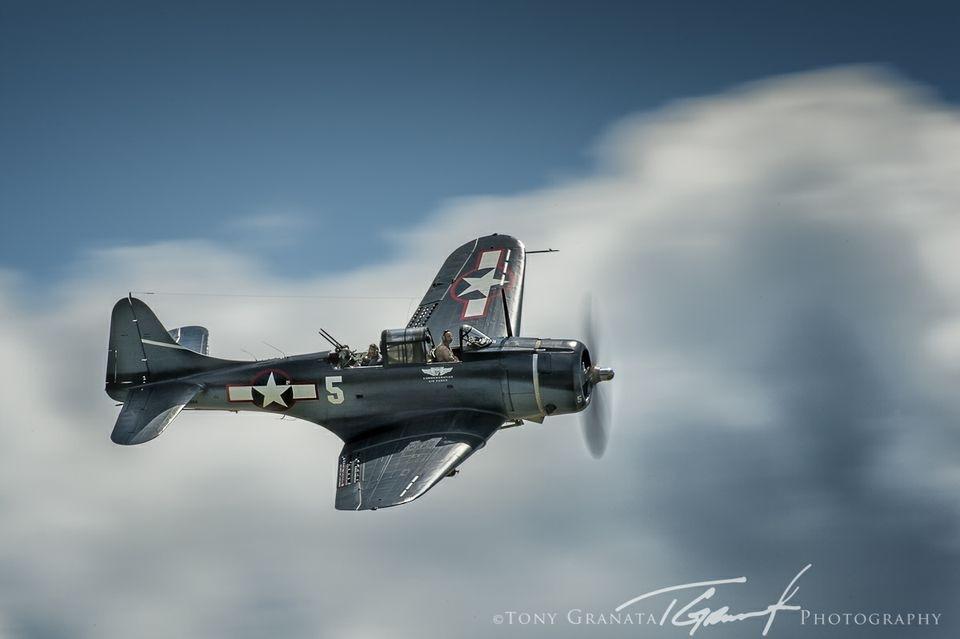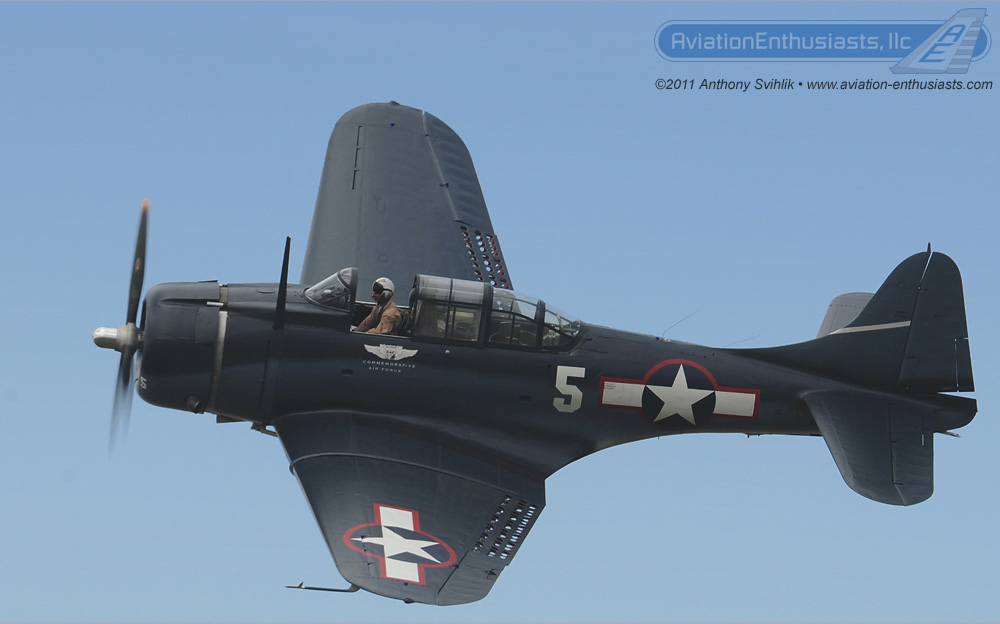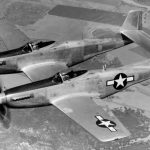
The Douglas SBD Dauntless flew for the first time seventy-four years ago today. A two-seat carrier-based scout and dive bomber, the SBD Dauntless hammered the Japanese at Coral Sea, Midway and in the Solomon Islands while supporting Navy and Marine Corps actions until 1944. No aircraft did more to halt the Japanese than the Dauntless – SBDs sank more Japanese shipping than any other U.S. aircraft in the Pacific. Dauntless pilots sat high in an aircraft that was designed to hurl bombs at targets while flying almost straight down at the enemy. The Dauntless used “Swiss cheese” dive brakes with 3-inch holes to help avoid buffeting during the dive. Bomb armament consisted of a single weapon of up to 1,600 pounds on the centerline cradle, with 650 pounds of bombs under the wings. When the center line bomb was released, the cradle swung forward so the bomb would clear the propeller arc. At the Battle of Midway, Dauntlesses were responsible for sinking Japan’s four main aircraft carriers.
Though considered obsolete on that “Day of Infamy” in the skies over Pearl Harbor, December 7, 1941, the SBD was the first American combat aircraft to shoot down a Japanese Zero fighter. It may have been slow, but it was deadly, as that Japanese pilot found out that day.
Despite many speculations, it is confirmed that the only two airworthy SBD in the world are the famous SBD-5 “Lady in Blue” (#5) operated by the CAF Dixie Wing ( click HERE for the history of this aircraft) and the one operated by Planes of Fame out of Chino,CA ( Click HERE for the history of the POF’s aircraft).
Visit the full website at www.aviation-enthusiasts.com for more aviation and air show memories!
























